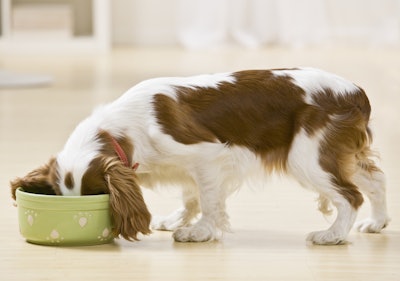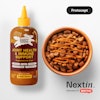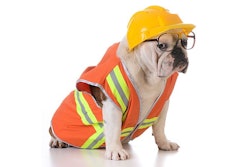
Brand insights from Scan American
Even in the midst of a global pandemic, the pet food production market continues to grow exponentially. While growth is being driven by developing and emerging markets, better quality pet food is still in high demand in mature markets.
With this growth comes increased demand for high-quality pet food. People love treating their pets to the best, so the demand for quality food at a reasonable cost keeps increasing. This presents many production challenges that you’ll need to address if you want to expand into this exciting market opportunity. But what’s the first step? It all begins with the right processing equipment.
Common Challenges in Pet Food Production
Consistency
As with most processed food, maintaining consistency across large production volumes can be challenging. This becomes an even bigger problem if batch cooking process is in use. With batch cooking, you waste a substantial amount of time to process each batch, often having to wait to fill from a large buffer tank. This staging, with varying dwell times before filling can magnify inconsistencies, leading to temperature loss and changes in pressure, moisture and texture, further overcooking without necessarily hydrating.
Each of the issues above poses a threat to consistency, within a single batch and in between batches, leading to a lower-quality, less consistent product. With end customers willing to pay a premium for quality pet food, this is the last thing you want to happen! Inconsistencies alone may not be the biggest concern, but they are the source of inefficient ingredient usage and end product variation.
Most pet food recipes combine several different ingredients including meat, vegetables, grains, stabilizers, by-products, etc. Each of these have different levels of viscosity and chunkiness, and different requirements, therefore demanding specific optimal cooking conditions to guarantee a consistent texture – every minute, hour and week of production.
Consistency is directly related to your market growth because it keeps your customers coming back.
Production Volumes
As part of the fast-moving consumer goods industry, pet food is generally sold at low profit margins, so high production and sales volume are key to long-term survival and a successful pet food business.
With batch processing, gaps in production are often a part of daily operations. The batch process is more time consuming, with time allocated for preparing each batch, mixing the ingredients, heating the formulation, adjusting settings, waiting to fill before starting the next batch and rinsing.
Each of these steps negatively impact your efficiency and productivity as they are done in series not parallel. Much of your time is consumed performing non-value-adding tasks, instead of producing pet food, limiting the production volumes your business strives to achieve.
Quality
Many recipes use a variety of different ingredients - yours might combine vegetables, meat and fish, as well as powders, by-products and grains. Like we mentioned above, temperature, moisture and pressure fluctuate between batches, affecting the final composition and causing unpredictable ingredient usage.
The RotaTherm® Continuous Cooking Process Can Help
Continuous food processing systems provide non-stop, consistent cooking, unlike traditional batch cooking. Many of the potential problems with pet food production are tied to the batch system of production. Therefore, the RotaTherm® consistent continuous cooking process offers a solution.
How Continuous Food Production Systems Improve Consistency
By applying the same process (heat treatment temperature, pressure, cooling, etc.) to all product at each stage, continuous cooking substantially minimizes the risk of variations in the final composition. The look and taste of the product is controlled, leading to a much more consistent end-product.
Compared to batch cookers, continuous cookers like RotaTherm® offer more efficient non-stop pet food production.
In addition to the fundamental advantages of continuous cooking, RotaTherm® uses multiple direct steam injectors and many other design elements that ensure your pet food is cooked evenly without the risk of undercooked or burnt parts.
Continuous Cooking = Continuous Production
As the name suggests, continuous cooking means no stopping in between batches. This process minimizes waste, time and cleaning chemicals, and leads to a much more efficient and productive food manufacturing process.
The RotaTherm® can operate without pause for up to 156 hours, 6.5 days!
In an industry that relies on production volume like pet food, every second of additional production can make a difference.

RotaTherm® Holds the Secret to Better Quality Pet Food
Every customer has the right to be selective. They want healthy looking nutritious products for their pets, instead of poorly-presented, low-quality food. By combining continuous cooking with automated temperature and steam control systems, RotaTherm® offers a better-looking, nutritious product. The RotaTherm® heats to the target temperature in as little as 20 seconds, using multiple steam injectors to ensure even cooking.
The automated control and recipe systems guarantee temperature, steam and moisture are at optimal levels, minimizing unacceptable product. This ensures your pet food recipes are being prepared to the same ideal specifications every single time.
If you are interested in learning more to see if continuous cooking is suitable for your business, please contact Scan American. We can schedule a trial of the RotaTherm® continuous cooker in Kansas City, MO.

















